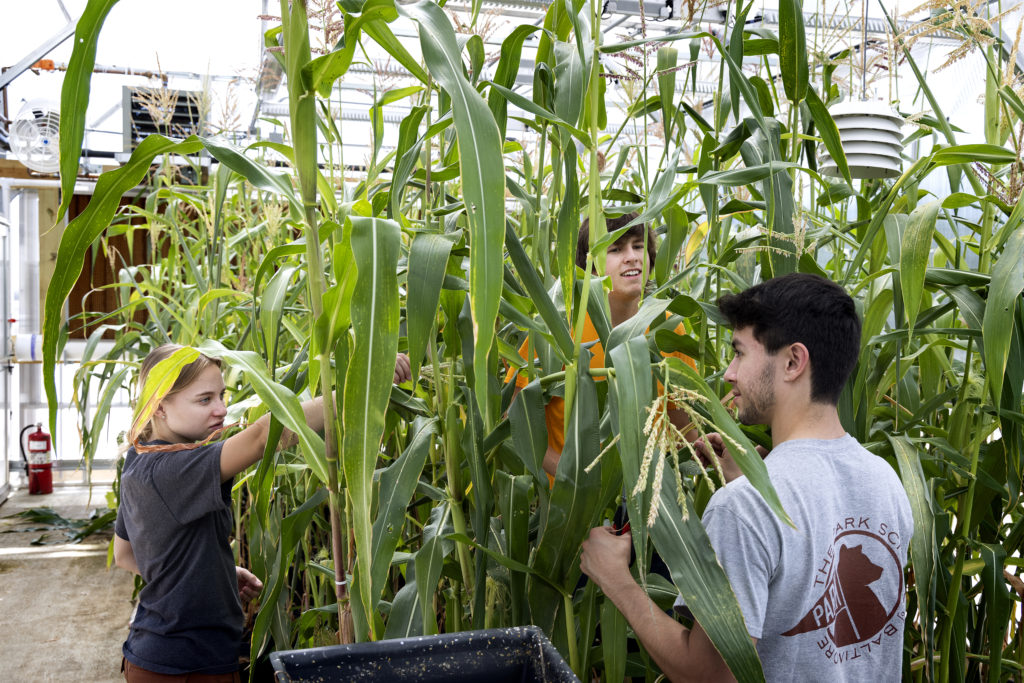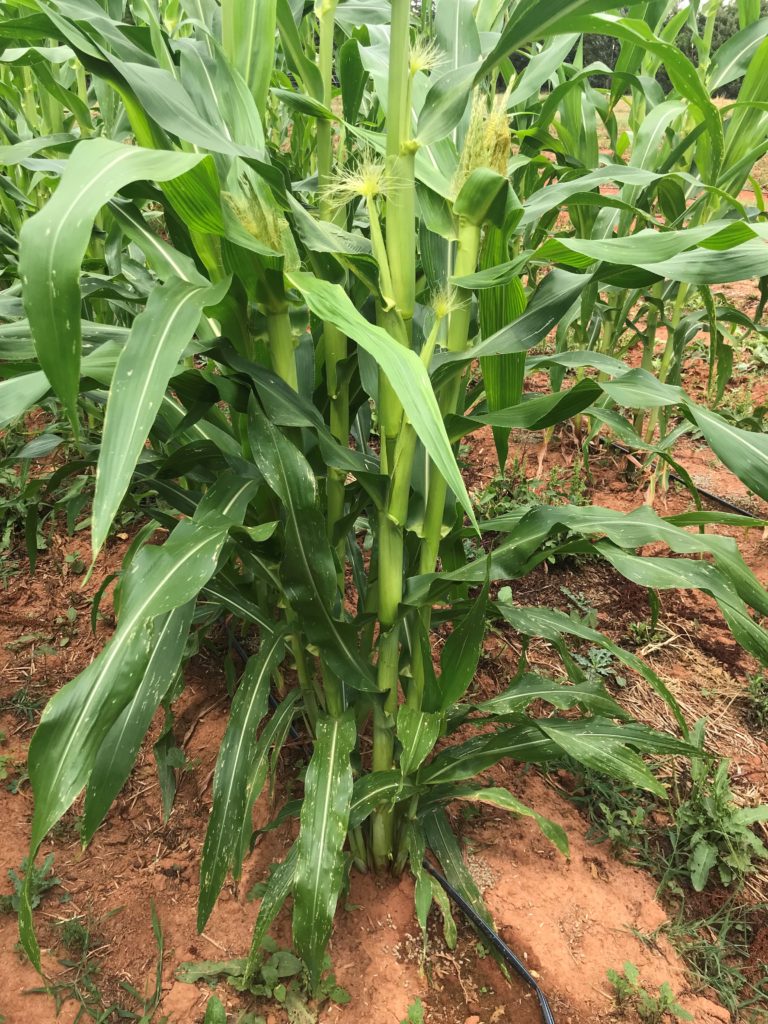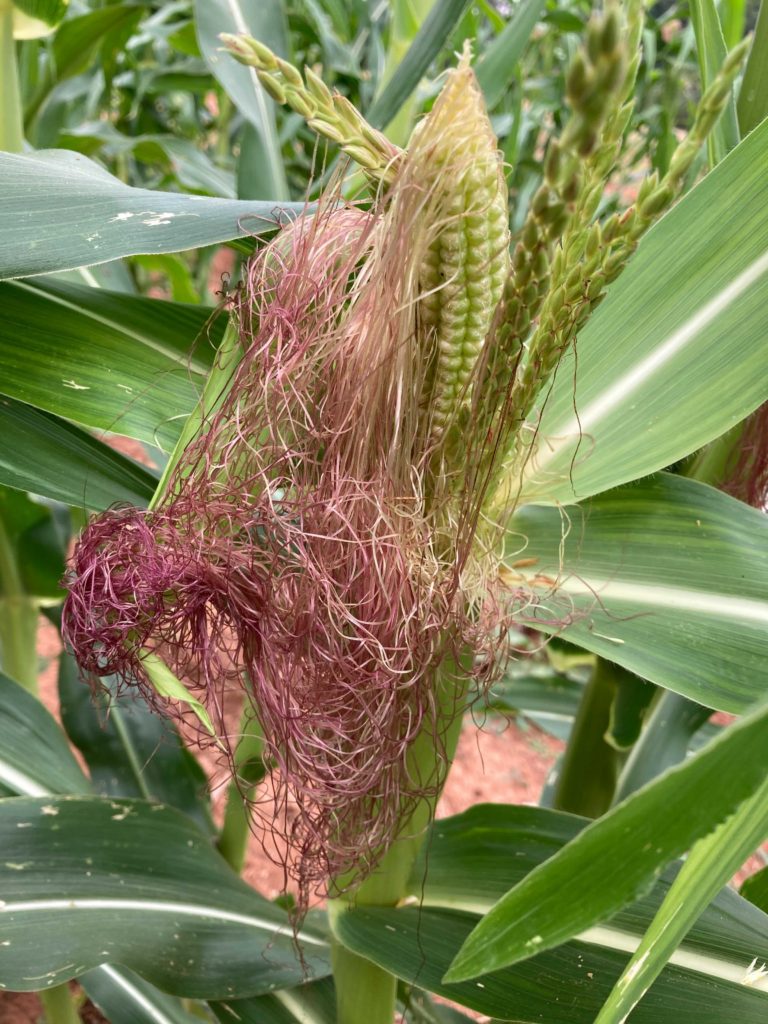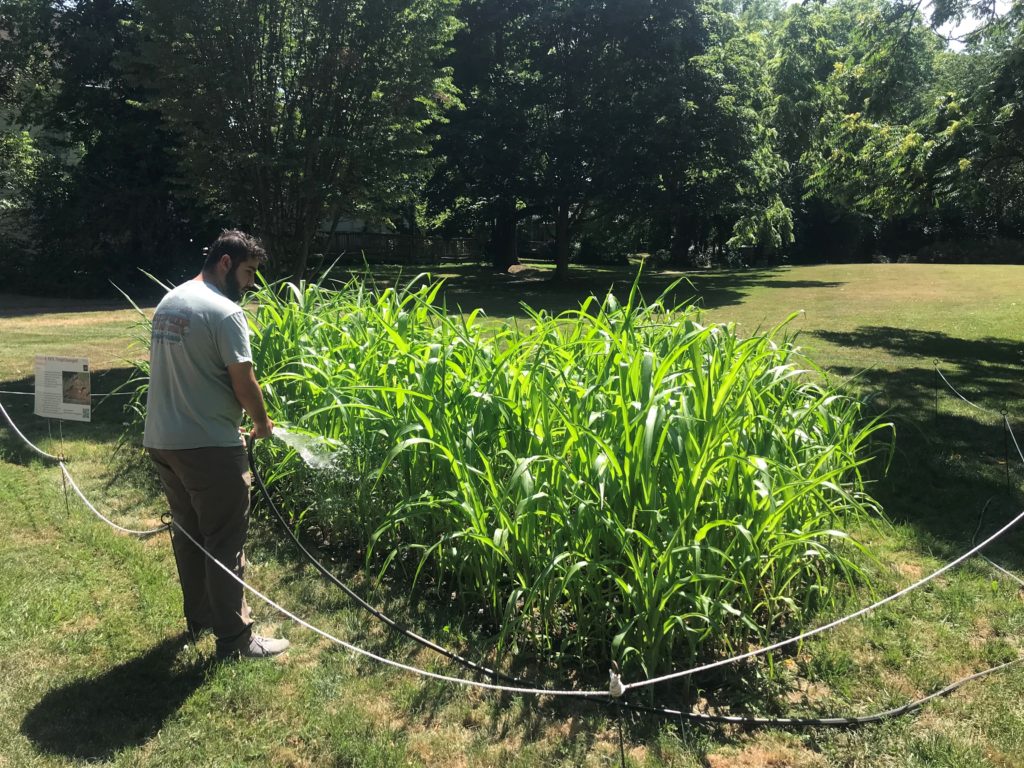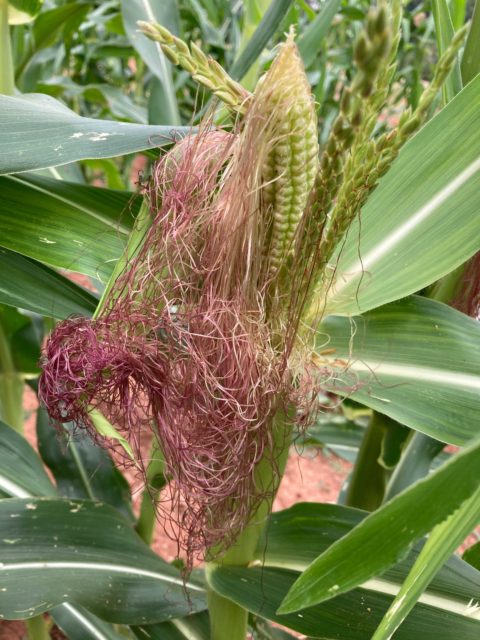In addition to water, fertile soil, and a pH level of about 6.5, corn loves sunlight. But perfecting the combination of these resources fundamental to the development of corn can be quite tricky. Great variation in growing conditions can exist within meters of each other, let alone from the Farm to the Katherine and Tom Belk Visual Arts Center (VAC). The current partnership between Davidson College, Nicholas Galanin, and the Catawba Nation involves growing corn at the Davidson College Farm, the Van Every/Smith Galleries, and the Pat Peroni Greenhouse: three very different environments with very different outcomes.
The corn grown in the greenhouse was subjected to a water manipulation experiment with the intention of assessing drought tolerance. The results of this experiment have been delayed by backlogs in data processing, but one take away is clear: corn does not grow well in the greenhouse. While preliminary results show that drought will have an adverse effect on this local variety of corn, almost all of the greenhouse corn displayed signs of stress. The small pots restricted nutrients, the limited space necessitated dense growing conditions, and the lack of wind required humans to become pollinators, which required manually shaking pollen rich tassels over emerging silks. While every effort was made to mimic field conditions, these abnormalities stressed all plants regardless of treatment group.
The corn grown on the farm has thrived under the direction of Farm manager Halle Murphy. The brace roots run deep into the rich, orange clay soil and many of the sturdy stalks now exceed 10ft. Needless to say, the growing conditions at the Davidson College Farm resemble the natural environment of Catawba Corn, and the successful growth has reflected that. The farm corn has recently entered its flowering stage, displaying both tassel (male flower that produces pollen) and ear (the female flower that produces edible corn). The plants all appear healthy, green, and vibrant. However, on the most recent examination of the field, an interesting phenomenon caught our attention. Protruding from the tops of many tillers (smaller shoots growing from the base of the main stalk) are mutant tassel-ears, or a flower that has both the male and female reproductive organs. The cobs of these mutant ears can be pollinated and will produce grain, but without the protective sheath of leaves, the grain typically is not edible. Tassel-ears commonly occur in corn, and while normally signals of stress or nutrient surplus, they should not impact the yield of the main stalk.
And that brings us to the corn currently rising from the silhouette of Andrew Jackson. While certainly healthier than the greenhouse corn, the Unshadowed Land corn appears stunted compared to the Farm. The tallest plants only stand at about 6ft tall while some remain shorter than 4ft. Another round of selective thinning and an inundation of helpful nutrients should stimulate growth, but the main limiting factor at this moment is sunlight. As I said above, corn loves the sun. It is a plant that requires full sunlight, which is typically defined as 6+ hours a day, while 10 is ideal. At planting, the field adjacent to the Van Every/Smith Galleries received plenty of sunlight. But as the seasons changed, the welcome tiny buds of spring slowly grew to shade the small patch of corn. The once sunshine-rich plot now receives between 4 and 6 hours of sunlight a day, resulting in a gradient of growth. The large tree across Main Street shades the whole garden well into the morning, while the tree behind the installation shades the rear corn again in the late afternoon creating the disparity of heights. In other words, Unshadowed Land has been consumed by shade.
Galanin’s work undermines monuments exalting colonizers who directly profited from and misappropriated Indigenous land, labor, and art. The corn symbolically and physically ‘buries’ the Jackson monument, reaffirming the right of the Catawba to their land and sovereignty as a nation. As Galanin said during a panel discussion last fall, Unshadowed Land “is a reference to that resilience, to surviving in these spaces despite colonization, and issues that we still struggle with today.” The end of his statement becomes more poignant with the shadowing of the corn. While the veil of the past is beginning to lift, colonization and its impacts continue to reverberate through the present day. Indigenous tribes across the country continue to fight for clean water, subsistence rights, and sovereignty, among many other important issues. This collaboration between Davidson College, the Catawba Nation, and indigenous artist Nicholas Galanin resembles the type of mutually beneficial partnership necessary to rectify the wrongs of the past, but a sustained and continued effort is required to truly unshadow this land. We must continue to center the voices of indigenous peoples and take action to create a more equitable future. One project certainly can’t remedy almost 500 years of colonization and disenfranchisement, but it’s a start. A long road lies ahead, and it’s one that’s best traveled together.
-Ty Cryan ’24
